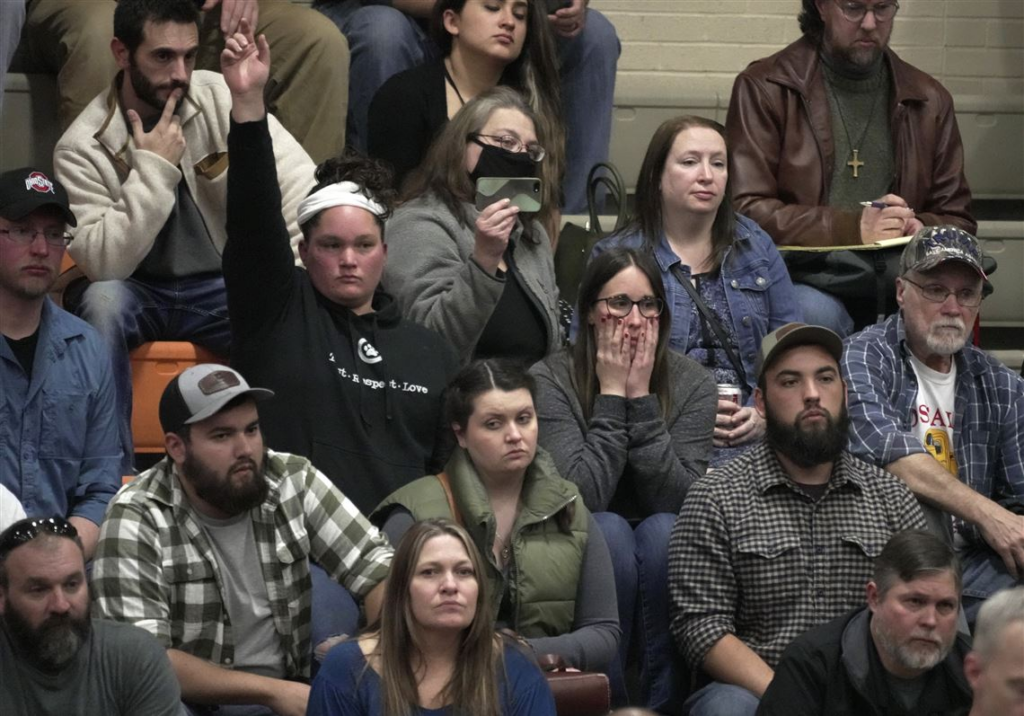 The bad news on vinyl, the poison plastic, and phthalates keeps on mounting.
The bad news on vinyl, the poison plastic, and phthalates keeps on mounting.
The more I learn, the more I wonder, why are we still allowing this hazardous plastic in our schools and homes?
Here are some of the most recent developments that every parent needs to know.
First responders file lawsuit over vinyl chloride disaster
In response to the December vinyl chloride disaster, which sent over a cloud of over 20,000 gallons of vinyl chloride into the air (originally destined for OxyVinyls in NJ), a group of first responders have filed a lawsuit over this toxic exposure. NBC Philadelphia reports:
“A class action lawsuit was filed today relating to the Paulsboro, New Jersey train derailment and chemical spill that forced hundreds of people from their homes and left dozens sick last year.
The plaintiffs include more than 100 first responders, young children, and property owners who allege they sustained injuries and damages after the hazardous chemical spill… First responders claim that Conrail representatives advised them throughout the day that they did not need breathing masks or other personal protective equipment, despite high readings of vinyl chloride in the air. The suit states they later underwent extensive medical testing that showed high levels of vinyl chloride in their urine.”
Vinyl chloride is the basic building block of PVC, used to make vinyl flooring in our nation’s schools, hospitals and homes. You can’t make this plastic without this cancer-causing chemical.
The latest science: vinyl chemicals toxic to our health
As families and first responders have been suing over vinyl chloride epxousre, more scientific studies have been published showing that vinyl chemicals are harmful to our health. Some notable studies in recent months include:
- Research funded by the US Department of Defense found phthalates, used to make vinyl flooring soft and flexible, may contribute to disease even generations after exposure. They report that, “Observations demonstrate that a mixture of plastic derived compounds, BPA and phthalates, can promote epigenetic transgenerational inheritance of adult onset disease. “
- Only a few weeks after I blogged on new studies linking vinyl chemicals to asthma and obesity, researchers in China found a link between phthalates and obesity in school children.
- Researchers in Ireland found potentially hazardous nanomaterials leach from PVC food packaging into food: “An exposure assessment revealed that human exposure to silver (assuming a worst case scenario that all silver is in its most harmful nanoform), is likely to be below current migration limits for conventional migrants and a provisional toxicity limit; however it is acknowledged there is still considerable uncertainty about the potential harmful effects of particles at the nanoscale.”
Policies to protect our kids from poisonous chemicals
On the policy front, the big news is the reintroduction of the Safe Chemicals Act by Senators Lautenberg and Gillibrand (honored to have her as my Senator here in NY, thank you very much 🙂 ), which will go a long way in protecting American families from unnecessary toxic chemicals like phthalates. Yesterday, the American Academy of Pediatrics issued a news release announcing their endorsement of these common sense health safeguards.
As chemical policy reform continues to be debated here in the US, at the international level, Denmark has just unveiled a comprehensive new strategy to address phthalates in consumer products.
“As part of the strategy, the Danish EPA will commence evaluation of the information available about the most common phthalates. And this may very well lead to new bans or other measures if necessary, the Minister for the Environment pledges.”
Pressure mounting to eliminate vinyl and phthalates nationwide
Meanwhile, the market movement away from vinyl and phthalates continues. For instance, EPEAT has recently announced new standards for printers and imaging equipment, which rewards PVC avoidance in electronics – which should have a huge impact on the electronics sector.
Just yesterday, the San Francisco Travel Association announced that all new street banners around the convention center will be completely free of PVC, due to the hazards PVC poses from production to use to disposal.
“San Francisco has always been a city of firsts when it comes to sustainability and now that extends to our city’s street banners. I’m pleased to see the San Francisco Travel Association embrace our city’s goals of zero waste and toxics reduction by eliminating the use of PVC, a harmful and non-recyclable material, and up-cycling the banners as well,” said Melanie Nutter, director San Francisco Department of the Environment.
Last and certainly not least, CHEJ and our friends at the Safer Chemicals Healthy Families campaign have launched a new Mind the Store campaign to urge the nation’s top ten retailers to eliminate the hazardous 100 chemicals, which includes phthalates, vinyl chloride, and a number of other chemicals unique to this poison plastic. Many retailers, such as Target, have already taken steps to phase out PVC, but much more is still needed. Read all about what bloggers are saying about the new campaign, who traveled to stores nationwide urging them to get these nasty chemicals out of their products.
***
Phew, that’s a lot to report on!
Anything important I missed? Would love to hear other new developments!
Till next time. Your humble plastics crusader, Mike.






